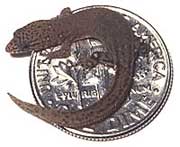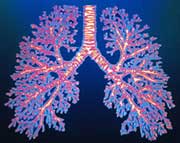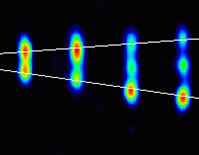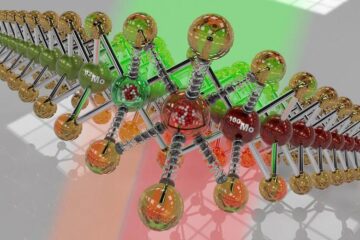Latest News

The littlest lizard
World’s smallest reptile is discovered in the Caribbean forest.
At just 16 mm from nose to tail, the Jaragua lizard is the world’s smallest. In fact, it’s the smallest vertebrate that can reproduce on dry land 1 .
The newly discovered lizard lives on Isla Beata, a small, forest-covered island in the Caribbean off the Dominican Republic. Blair Hedges, an evolutionary biologist at Pennsylvania State University, together with Richard Thomas of the

Quantum computers spread the risk
A balanced portfolio of programs could mean a faster quantum computer.
Strategies from the world of finance could help get the best out of quantum computers, say US researchers 1 . The right portfolio of programs could solve a problem many times faster than a single strategem.
Quantum computers – purely hypothetical as yet – would be fast, but you could never be sure whether a program was going to work or not. You would have to keep running the program until

Radiation zaps bystanders
Radon may pose a greater cancer threat than has been thought.
Radon damage from irradiated cells spreads to their neighbours, a new study finds 1 . The result suggests that small amounts of this radioactive gas could cause widespread harm.
The study “is a reason for concern but not panic”, says Gerhard Randers-Pehrson of Columbia University, New York, a member of the team that performed the study. “We’re talking about the acceptable level of radon changing pe

Study Suggests Predators Are Vital to Health of Ecosystems
The question of which forces control terrestrial ecosystems lies at the heart of a long-standing debate among ecologists. One theory, the so-called bottom-up theory, suggests that plant defense mechanisms exert control by limiting food availability for herbivores. Top-down theorists, however, suggest that predators limit the numbers of herbivores and hence their impact on the vegetation. Now new findings in the current issue of the journal Science that describe animal communities isolated for 15 year

Transgenic Tobacco Detoxifies TNT
For more than 150 years, people around the world have made ample use of the explosive trinitrotoluene, otherwise known as TNT. Its use has had unintended consequences, however: the manufacture, storage and disposal of TNT—which ranks among the most toxic explosives employed by the military—have left large areas of land contaminated and polluted. So far, effective and affordable cleanup technologies have remained out of reach. But new research suggests that help may come from what might seem an unlike

Massive hole makes theories leaky
Surprising black hole weigh-in has astronomers scratching their heads.
Forty thousand light years away, on the other side of the Milky Way, lies object GRS1915+105. It is a giant star and a black hole orbiting one another, blasting out X-rays and ejecting gas and dust at close to the speed of light.
Now measurements of this “extreme and puzzling” object are casting doubt on current theories of how such binary systems form and behave. Astronomers have weighed its black hole,











